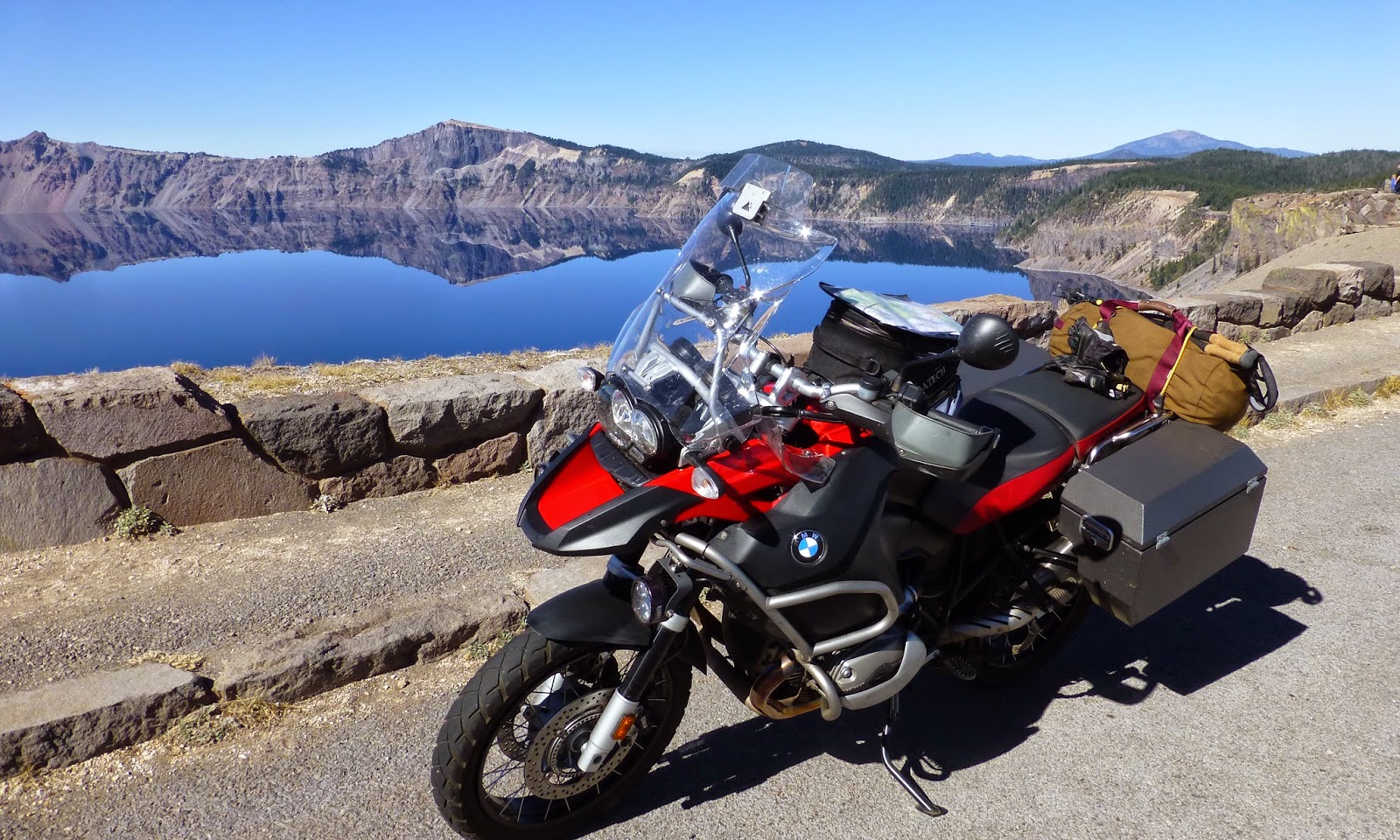On the Volcanic Legacy Tour of California and Oregon
Dateline:
Camp Sherman, Oregon.
There is the river. A few
cabins dot the Ponderosa forest floor and a gently sloping sward of green links
the forest and the stream.
And there’s the tiny but very nicely appointed general
store. Several footbridges cross
the river to it.
But there is no Internet access. Cell phone coverage is limited to a clearing called “the
Crossroad” about 400 yards west. There’s
a stump you can sit on if you must make contact with the outside.
But why? This
place is perfect.
After each day’s ride, I’d grab a
copy of whatever it was I was reading and head for a rustic bench positioned
about seven feet back of the Metolius River. There, with the robust flow of the spring-fed stream
providing the ideal white noise for concentration, I read. Uninterrupted for ninety minutes or
more, until the sun slipped behind the stand of pines and evening’s coolness
breathed in and settled across the little valley.
I said “uninterrupted,” but that was an overstatement. Twice a pair of Mallards jetted past,
their wingtips just touching the river’s surface. Each time, they squawked as if deep in disagreement with one
another or, more likely, angry with me for claiming their bench. Then there was that hawk’s primal “good
night” call just around dusk. It
still echoes.
Camp Sherman is located about twenty
minutes west of Sisters, the quaint but rapidly becoming a bit too touristy
home of a renowned annual quilt show.
Spanning both sides of the river, Camp Sherman is a Mecca for
fisher-people and deer hunters in season.
What do folks who do not fish or hunt do on the river? Reading was nice. So was a good cigar and a dram of local
whiskey after a grilled steak or pit-barbecued chicken.
Upstream, it is a short walk to the source of the river: a
huge and dynamic spring flowing from beneath a moss and fern covered hunk of
basalt.
Downstream, Oregon
wildlife folks have established a fish hatchery in order to stock this and
other area waterways.
In the vicinity are stretches of pine forest, some of which,
lately, have been touched by fire.
Further on, evidence of the area’s glacial and volcanic
legacy can be found in the etched faces of the mountains, the vast acreage of impassable
“aa” and the gritty, sandy, cindery ridges that, were it not for the root
networks beneath the forest floor, would be eroded or simply blown away.
A good day’s drive from either Sacramento or Seattle, Camp
Sherman is centrally located in Oregon and in the west. It is a little piece of heaven that
recalls rugged, yet simpler times, inviting our pulse to slow, our hearts to reflect
and our spirits to be renewed.
We’ll return.
o0o
Notes and Resources:
The Camp Sherman Store is worth the trip all by itself. Nice collection of wines, beers and all
the sundries any forgetful person might have forgotten. I’d forgotten butter and matches and
ended up with that and a six-pack of Mirror Pond Ale, brewed locally in
Bend. Had I needed a Royal Wulff or a Gray Ghost trout fly, I'm sure they'd have accommodated.
Here is the store’s website: http://www.campshermanstore.com/
On this latest visit, riding brother Randy and I stayed at
the Cold Spring Resort: http://www.coldspringsresort.com/
Accommodations were clean and quaint but a little tight for a couple of big
buffaloes such as ourselves.
When previously visiting the area with our wives, the
Metolius River Resort’s cabins proved to be quite comfortable, spacious and well
appointed: http://www.metoliusriverresort.com/index.asp
The local restaurant wasn’t open for breakfast, and we
didn’t pack for that, so we started each day trip with a run into Sisters where
there are several nice breakfast places.
The Sisters Oregon Guide has this to say about Camp Sherman:
http://www.sistersoregonguide.com/recreation-camp-sherman.html
© 2014
Church of the Open Road Press

















































